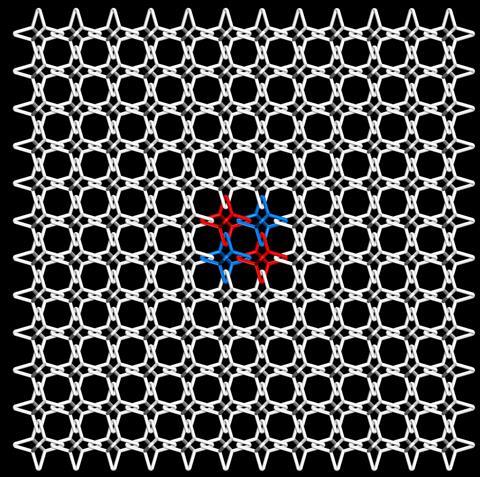
Interlocked molecules have entered a new dimension. Researchers have synthesised an ‘infinite three-dimensional catenane’ by constructing concatenated covalent–organic frameworks (COFs). This chemical chainmail is extraordinarily flexible and resilient, which could lead to applications in materials science and synthetic biology.
‘Chemists have always thrived on controlling atoms and molecules to create larger structures with new properties,’ says lead author Omar Yaghi, from the University of California Berkeley. ‘This is the first example of a three-dimensional interlocked COF structure,’ he says. The perfect crystalline structure of the material means the interlocking is homogeneous and uninterrupted throughout the network. ‘On a molecular level, molecular interlocking allows many degrees of freedom, a mechanism to dissipate energy such as external stress,’ continues Yaghi. Therefore, the COF chemical chainmail exhibits extreme flexibility, yet it’s almost unbreakable.
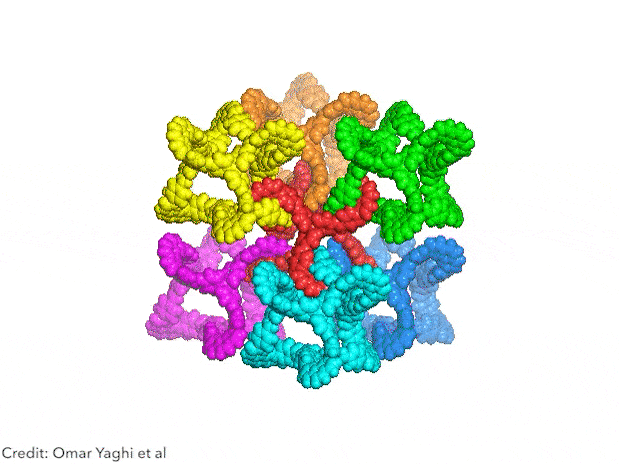
The COF is prepared following a building blocks approach, originally developed in the field of reticular chemistry. ‘This strategy offers designability and a simple methodology to yield complex structures,’ says Yaghi. After identifying the right molecular geometries for the chemical chainmail, researchers functionalised them with moieties that easily react with one another – in this particular case aldehydes and amides, which condense into imine bonds.
Leslie Hamachi, an expert in COFs based at California Polytechnical State University, who wasn’t involved in the study, explains this is ‘the first interlocked chainmail with repeating linked rings’. Although previous papers reported other interpenetrated structures, such as chains and woven threads, ‘a three-dimensional extended crystallite’ had never before been achieved. ‘New topologies – ways to intertwine the material – lead to different mechanical properties,’ she adds.

Moreover, the synthesis is really straightforward, despite the complexity of the catenated COF. ‘Two molecules come together, after mixing them with a catalyst in a liquid solvent and applying heat,’ says Hamachi. ‘After some days, the material forms as a solid at the bottom of the container.’ One of the precursors was prepared specifically for this reaction, however ‘the others are commercially available’, she explains. This will facilitate further research into this type of interlocked structures.
The biggest challenge, according to Yaghi, was finding the right conditions. ‘We’ve been addressing this since the discovery and development of the first COFs in our lab, back in 2005,’ he says. Furthermore, the team needed building blocks with the exact ‘embracing’ parts and pieces, otherwise the resulting structure wouldn’t lock together in an infinite pattern of chain links. ‘Now, we create high complexity constructions, containing millions and millions of interlocking polyhedra in only one step,’ adds Yaghi.
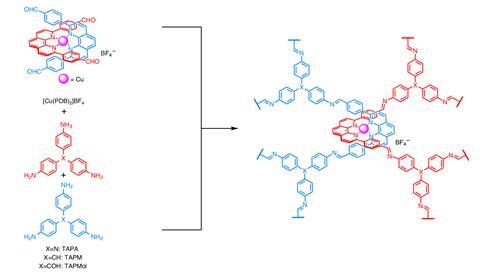
Beyond the applications in materials science, researchers dream of applications in synthetic biology. Viruses, for example, have capsids with interlocking rings that adapt to different cargo sizes, expanding and shrinking accordingly. Chainmail COFs could provide an alternative for molecular vessels and drug delivery. Other applications could emerge in the field of biomaterials. ‘The resilient flexibility of the COF chainmails could find uses in artificial muscles, skin and cartilage,’ explains Yaghi.
References
T Ma et al, Nat. Synth., 2023, DOI: 10.1038/s44160-022-00224-z






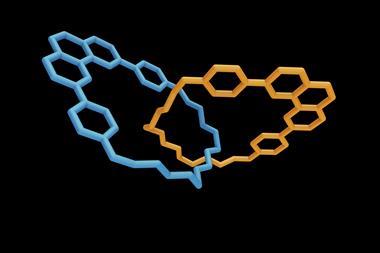
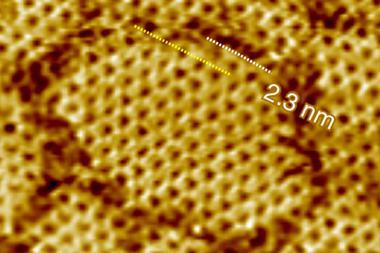

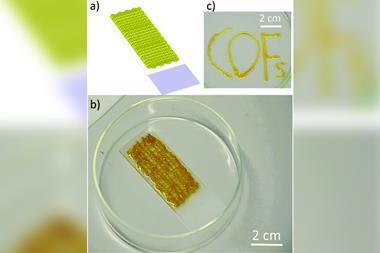







No comments yet